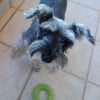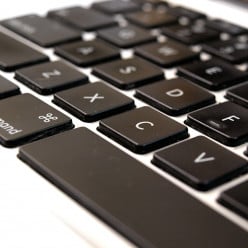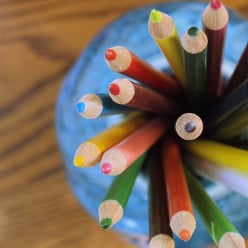How do you describe music to a deaf person?
How do you describe music to a deaf person?
I have a good friend who's deaf since birth, we communicate through sign language, recently he asked me to describe what music was, it was the toughest question I ever had to answer, I couldn't warrent a proper answer, an answer that I felt sure could make him understand, anybody out there know?Try explaining it as being similar to vibrations that we can all feel through the sense of touch. That's essentially what sound is - vibrations that our ears are sensitive to. Music is an arrangement of these vibrations into recogniseable patterns that we find attractive.
The percussionist, Evelyn Glennie, is a world class concert performer of many percussion instruments including tuneful ones like xylophones, despite being profoundly deaf (although from age 12, not from birth). She feels the music as meaningful vibration patterns.For me it's an electricity that you feel under your skin that grows 'til it reaches the core of your body and makes you want to dance or it pulls out of you an emotion that makes you react.
Music is a universal language. Through music all nations have the ability to communicate. However, describing music to someone who is deaf is not easy. The way that I would do it is through emotion, beat and touch.
Throughout your home you may have a variety of tools to use, that will give an impression of the 'tones' you wish to convey.
Velvet could emulate soft tone, wheras, running your hand across some cordoroy or sandpaper could be for a sharper sound. volume could be shown by using glass jars and water. Lower sounds when the glass is empty, loud when the glass is full. A crescendo could be visualized with pouring water at speed to fill the glass.
Choose a piece of music that you know well, gather together appropriate items and ask your friend to lay one hand on the speaker to feel the beats, and then offer the tools to simulate the sounds.
The best way to describe is through experience, and you can give your friend just that.
Good LuckI have a new deaf friend that I have been racking my brain on how to explain music and this is what I have come up with.
Many deaf people talk about the vibration as the best way to understand it but that does not do it Justice. It feels like vibration but sounds more like the way a wave water looks. Think of this way. Look at a large body of water, on it you will see waves. There is bound to be some larger waves and many smaller waves on top of the larger waves. The small ones come and go quickly and the larger ones seem to continue for a longer time. The small waves are high notes and the larger ones are low notes. Now what you have to do is watch the water an look for patterns. This pattern is basic visual music. Now close your eyes and change the patterns of the waves maybe 3 large waves and each of those that 6 small waves on top of it. 1 large wave on top count 1,2 small wave, 1,2 small wave until you get to 6 small waves now created a large wave and do it again. Mix the patterns up to create what you want. Now here is where it gets fun now add 2 sets of waves that are a little different but running in same pattern. That is harmony. Add color to give it depth, mood and feeling. Watch how the wind changes the waves and how the leaves dance in the same ways the waves are moving. Think of the wind like the voice that is singing the song.
Try doing this put ear plugs in and maybe a ear muff if some kind, the idea being to make your self as deaf as possible, put on some music down low and put your hand on the speaker and try to do with your hand and the images that I have given you and created the music. Something slow and deliberate is the best way to start. This has changed the way I experience music nowI haven't heard one description that will do this justice. I experienced profound hearing loss when I was 19 so I know what music sounds like. Like color there's over a million shades from white to black and everything in between. So you have all these sounds from instruments, voices, and everything else if you want to include that like wind and waterfalls, foot steps, doors slamming, cars going by, birds whistling, dogs barking. A bird whistling could be like comparing one word out of every known language and we could just say that's a word in Chinese. So let's say we're talking about opera music. Those high pitches are specific. If I asked you to describe what note an opera singer hit (not what I like but just an example) you couldn't do it. Of course you can say its like a sharp pain, maybe not the best analogy but you know what I mean. And of course vibrations don't it justice. Some deaf people are getting cochlear implants. I actually heard one story of a guy who'd never heard music before and after getting an implant I think he heard some music on a piano and went to it just mesmerized. I'm not even sure how long he sat there listening. I bet part of the mystery is some part of his brain as if in deep slumber just woke up. As for me the only reason I won't get a cochlear implant is because I will not settle for anything less than 100% restoration. I just wanted to see if anybody had any ideas because deaf people are taught to sing but even that isn't what it should be. I've had trouble remembering some stuff like a whole song and not just parts. Music was never meant to be described. Its like trying to describe sex to a virgin.
By the way I'm not trying to be mean. Like I said there's cochlear implants and hearing aids or perhaps some other medical cure yet to be found. You can use the ideas above but just let them know you just have to experience it.
In an episode of House there was a deaf patient and House put a boombox on the patient's stomach so he could feel the vibrations.
I know this is an old post, but I just saw this the other day: https://www.youtube.com/watch?v=EuD2iNVMS_4
Related Discussions
- 21
What sounds would a person hear in a forest?
by kookoo88 5 years ago
What sounds would a person hear in a forest?I'm trying to describe a forest in my book. I have "humming of insects", chirping of birds", "Noises of critters", and "breeze whispering through pine needles" Any other ideas?
- 23
Is it wrong to cut a friend out your life?
by Sa Toya 15 years ago
I was friends with this girl for almost 3 years, we became very close. She was one of my best friend, then she just turned.She became very manipulative and BITCHY and made my life hell. She started isolating me from the group and it was so difficult because everyone followed her lead. No matter...
- 21
Any other way to describe "falling" in love? Or do we want to suggest that it h
by Dora Weithers 13 years ago
Any other way to describe "falling" in love? Or do we want to suggest that it hurts?If you think of a more positive way to describe this wonderful experience, please share. Thanks.
- 23
Why do people do this???
by Bill Manning 15 years ago
Most people here don't know this, but I'm 90% deaf. Yes, that's pretty bad, however I talk fine and most never know it. Frankly it does not bother my personal life a bit. However,,,, Every time I go to the checkout at a store and get asked something, or get approached by someone, I shake my head...
- 6
Describe Friendship?
by jackman001 15 years ago
Hello Friends now this is the chance to prove yourself that how well u know the term friendship.
- 54
Should we believe on future predictions made by astrologers? How true they can b
by Deepali 8 years ago
Should we believe on future predictions made by astrologers? How true they can be?Astrologers make predictions through one's date of birth or by looking at ones palm or for head. Is it a science based on facts or just we are bi fooling us?












